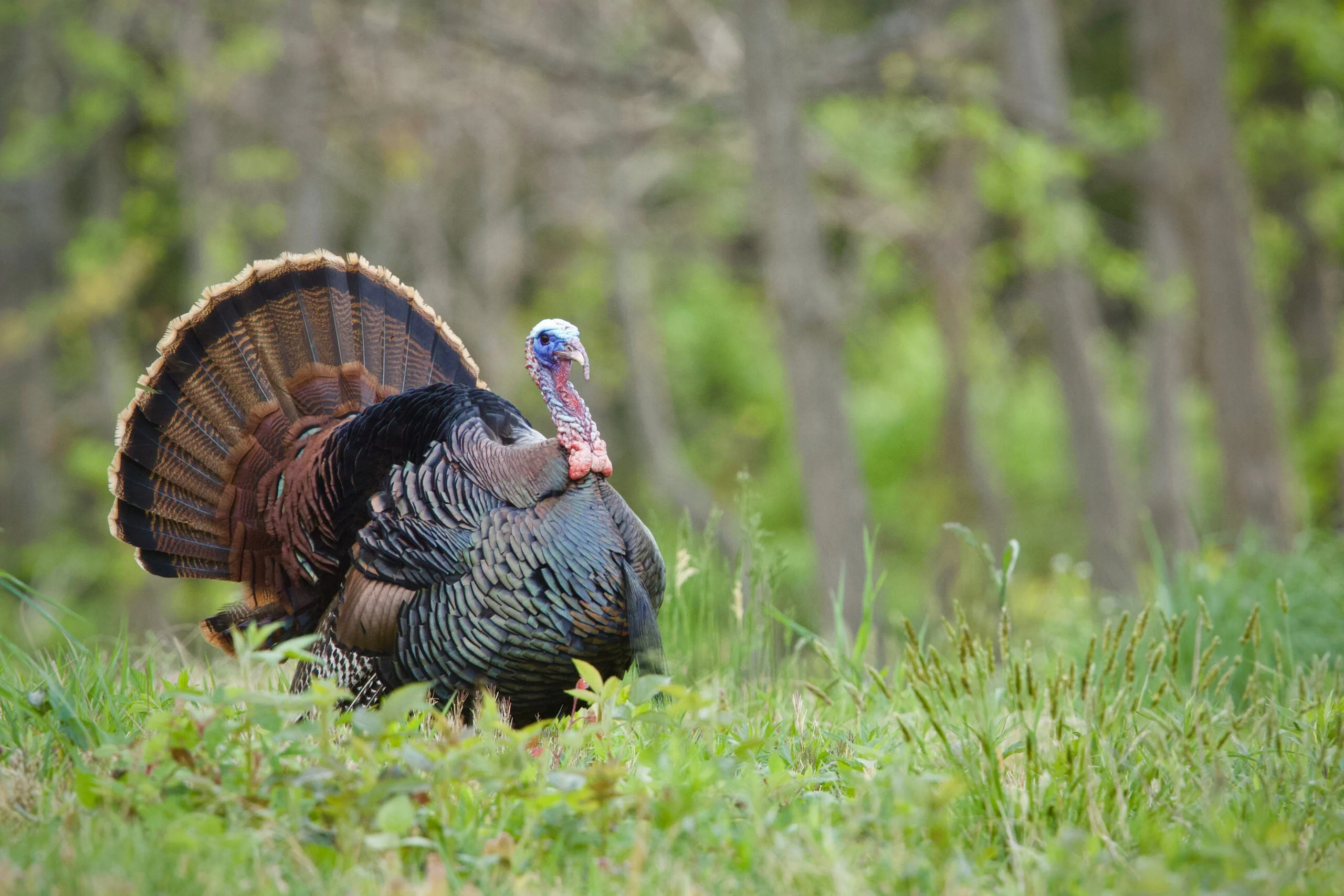Ticks and the diseases they carry
are the bane of those who frequent the outdoors. They can render the glory of an outing in the woods or along a stream into an ordeal of serious illness, even death. All from a pinprick and the extraction of a small, but bloody meal. But what are the banes of this tiny arachnid that can humble the apex predator? That’s the question we’ll tackle in this article: What eats ticks?
A range of wild animals, including toads, birds, lizards, rodents, and opossums consume ticks. Barnyard birds, like chickens and helmeted guineafowl, also eat the dreaded blood-sucking arachnid. Introduced fire ants will prey on engorged female ticks, devouring the blood or eggs within, and feasting on small hatchlings.
Table of Contents
Natural Predators
Nature’s Balance
Biological Control Agents: Domestic Fowl and Fire Ants
Wild Turkeys Have Little Impact
An Ounce of Prevention
Natural Predators
Like all other animals in the woods, ticks eat and are eaten. So, while they position themselves for their next meal, they are also vulnerable to the wild creatures they share their habitat with. The list below outlines the main natural predators of ticks, their hunting and gathering methods, and their tick-eating capacity.
Frogs: Frogs will slurp up ticks if the opportunity arises. But, since frogs live in water and ticks live on land, their paths rarely cross.
Toads: Since toads share ground space with some ticks, they are more likely to eat them than frogs are.
Spiders: Wolf, brown recluse, house, and cobweb spiders are known to catch and eat ticks.
Racoons: Racoons clean themselves multiple times a day—and eat the ticks they find in the process.
Insects and other arthropods: Beetles. Ladybugs, dragonflies, true bugs, centipedes, and ants will occasionally eat ticks if they can get their mandibles on them. These arthropods are more likely to prey on ticks when they are fully engorged with blood.
Rodents: Mice, rats, shrews, chipmunks, and squirrels will eat most of the ticks that latch onto them and, in some cases, hunt them down. Unfortunately, they also serve as nature’s primary reservoirs for tick-borne diseases. White-footed mice, for example, are the ecological wellspring for Lyme disease bacteria.
Songbirds and woodpeckers: Woodpeckers and many passerines, like bluejays, grackles, northern mockingbirds, black phoebes, wrens, robins, magpies, crows, eastern bluebirds, purple martins, swallows, and nuthatches will eat ticks they encounter on a tree or in the bushes.
Ground-feeding birds: Pheasants, quail, partridges, roadrunners, and wild turkeys all eat ticks as they scour the ground for a meal.
Cattle birds: Oxpeckers and cattle egrets groom large wild and domesticated animals, eating ticks and other insects they find while combing through their coats.
Lizards: A variety of lizards, especially in the southern and western U.S. states, both host and eat ticks.
Opossums: There’s an oft-repeated claim on the web
that opossums are like understory mops— they soak up whatever ticks they encounter on the possum trail, then feast on them.
What Eats Ticks: Nature’s Balance

Humans, it turns out, are humans’ best hope for reducing tick bites
. Rather than rely on a guineafowl or frog, wear long-sleeved, light colored clothing with an insect repellent that contains 0.5-percent permethrin. Adobe Stock / gabort
The good news is that ticks have plenty of natural predators. But, that doesn’t change the natural balance that has evolved over the millennia. Many of the tick-eating animals listed above are generalists. While they may eat any ticks they encounter, they do not specialize in ticks and they eat a wide range of other plants and animals. So, they cannot be relied upon to rid an area of ticks.
Biological Control Agents: Domestic Fowl and Fire Ants
To tip the balance, some humans turn to domestic fowl. Ducks, chickens, turkeys, peafowl, and guineafowl all eat ticks avidly. But, like their fellow tick-eaters of the wild variety, these hungry home-bound birds eat a wide range of other plants and small animals. So, they tend not to rid locales of all ticks.
Fire ants can also be introduced to a tick-infested area and will reduce tick numbers by preying on engorged ticks, tick eggs, and hatchlings, but the risk that they will do other ecological damage
is significant.
What Eats Ticks: Wild Turkeys Have Little Impact

Only 10 percent of a wild turkey’s diet consists of small animals, including insects, and arachnids. Adobe Stock / tomreichner
With the restoration of wild turkey populations across the U.S. in the 1990s and 2000s, there was hope that the voracious birds would put a major dent in tick populations. But the hope never materialized. Only 10 percent of a wild turkey’s diet consists of small animals, including insects, and arachnids. But once again, turkeys eat such a wide range of small animals, including stink bugs, grasshoppers, ground beetles, snails, slugs, worms, spiders, and other invertebrates, they do not significantly reduce tick populations.
An Ounce of Prevention
Lots of animals, wild and domestic, eat ticks. But, not enough to remove the risks ticks present to humans who like to spend time outdoors. Humans, it turns out, are humans’ best hope for reducing tick bites
. Rather than rely on a guineafowl or frog, wear long-sleeved, light colored clothing with an insect repellent that contains 0.5-percent permethrin. And check your clothing and your body for ticks when your outdoor activities are over.


